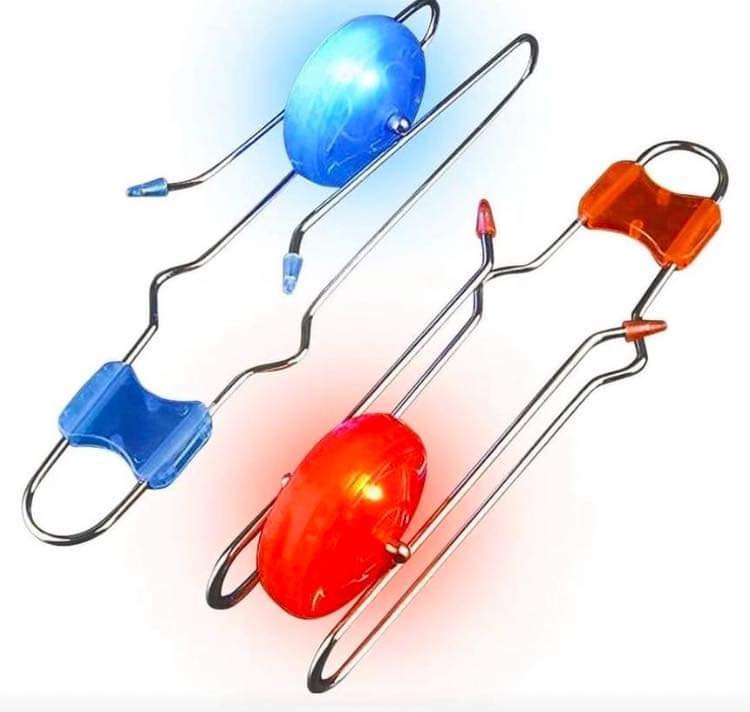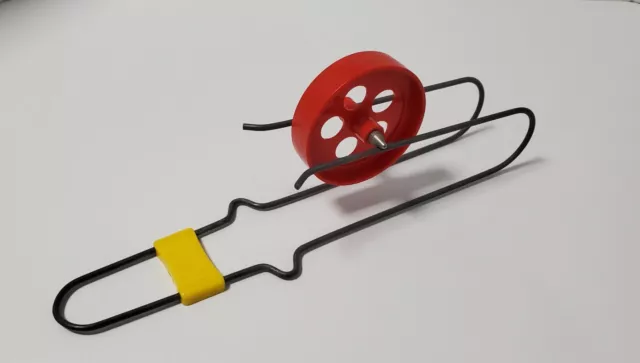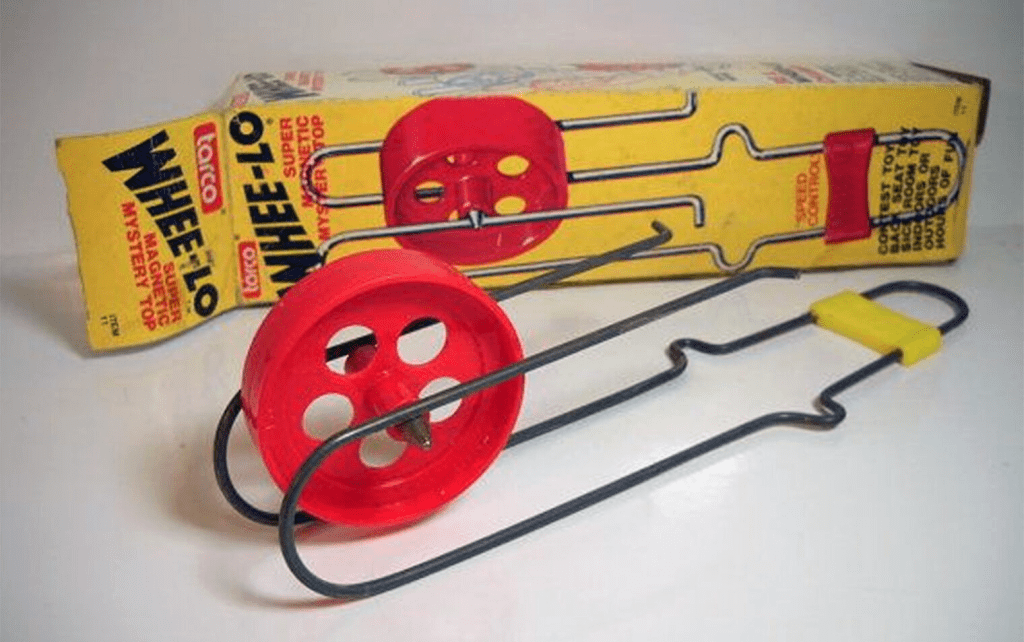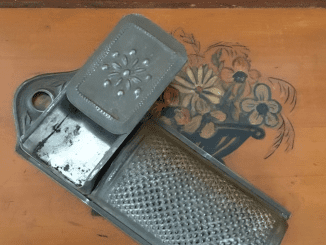The WHEE-LO toy, a fascinating handheld device, continues to intrigue both kids and collectors with its blend of simple mechanics and mesmerizing motion. Originally introduced by the Maggie Magnetic company in 1953, this toy leverages the principles of magnetism to create a unique and entertaining experience. As of 2024, companies like Schylling and Ipidi have revived the toy under different names, showcasing the enduring appeal of the magnetic gyro wheel. But how exactly does the WHEE-LO work, and what makes it so compelling? Let’s take a deeper dive into the fascinating world of WHEE-LO and its history.
What is WHEE-LO? The Magnetic Toy That Rolls and Spins

WHEE-LO is a trademarked toy designed to propel a plastic wheel along a metal track, thanks to built-in magnets that generate motion. The track, which is adjustable in width, tilts up and down, allowing the wheel to roll across both the top and bottom surfaces. Through a combination of magnetic forces and careful timing, the wheel continuously travels along the track in a cyclical motion, always staying in contact with the surface. When the track is tilted at the right angle, the wheel can gain remarkable speed, delighting anyone who watches it race around the course.
The ingenuity behind the WHEE-LO lies in the interaction between the wheel’s magnets and the metal track. As the track shifts, the magnets help propel the wheel forward, making it an exciting and dynamic toy to operate. With the right adjustments, the toy can provide hours of entertainment as the wheel twists and turns along its path.
A Brief History of WHEE-LO: From Invention to Icon
Though the WHEE-LO trademark was registered in 1958, the toy first appeared in 1953, introduced by the Maggie Magnetic company based in New York City. The toy’s invention is credited to Harvey Matusow, who described the creation of the toy in his autobiography The Stringless Yo-Yo. According to Matusow, he invented the WHEE-LO in the early 1950s and later sold the rights to the Maggie Magnetic company, which brought the toy to market.
Originally marketed as an innovative toy that combined fun and physics, WHEE-LO quickly became a favorite among children and collectors alike. The toy’s key feature was its ability to create optical illusions thanks to colorful cardboard discs, known as Whee-lets, which could be attached to the wheel. As the wheel spun, the Whee-lets created dynamic visual effects, adding an extra layer of entertainment to the toy.
The Mechanics Behind WHEE-LO: How Does it Work?
At first glance, the WHEE-LO may appear to be a simple toy, but its design relies on the fascinating science of magnetism. The core mechanism involves a plastic wheel embedded with magnets that roll along a specially designed metal track. The track can be adjusted in width, and this feature plays a key role in how fast the wheel travels.
The narrower the track, the faster the wheel moves. This is because the wheel’s axle, which is thicker in the middle, covers more distance with each rotation when the track is tighter. On the other hand, widening the track slows the wheel down, as it doesn’t travel as far with each rotation. This adjustable feature allows users to experiment with speed, creating an interactive and customizable experience.
Moreover, the tilt of the track also impacts the wheel’s movement. By tilting the track up and down, the wheel gains momentum as it moves from side to side. This unique combination of magnetism, physics, and timing creates an endlessly captivating experience that appeals to both young and old alike.
WHEE-LO and Its Cultural Impact: A Toy that Endured
Since its introduction, WHEE-LO has transcended generations, becoming a nostalgic piece of childhood for many. Its appeal lies not only in its unique magnetic mechanism but also in the way it engages users in a playful exploration of physics. The toy encourages children to experiment with angles and distances, fostering an early understanding of motion and energy.

Over the years, other companies have introduced similar toys inspired by the WHEE-LO, but none quite matched the charm of the original. Today, toys like Schylling’s Magnetic Gyro Wheel and Ipidi’s Retro Magic Rail Twirler continue to keep the spirit of WHEE-LO alive. These modern iterations, while slightly different in design, retain the same core idea of a wheel propelled by magnetic forces, making them a natural progression from the toy’s 1950s origins.
The Evolution of WHEE-LO: New Versions and Modern-Day Appeal
In the 2000s and beyond, manufacturers such as Schylling and Ipidi began to release updated versions of the classic WHEE-LO, maintaining the core concept while introducing fresh elements to attract a new generation of fans. Schylling’s Magnetic Gyro Wheel and Ipidi’s Retro Magic Rail Twirler both offer similar experiences, with updated designs and packaging, yet the basic principle remains unchanged: a plastic wheel that races around a metal track with the help of magnets.
These newer versions continue to capture the imagination of children, offering a tactile and interactive experience that is rare in today’s world of digital entertainment. Moreover, the nostalgia associated with the WHEE-LO makes it an attractive item for collectors, who seek vintage or classic editions to add to their toy collections.
Why WHEE-LO Is Still a Fascinating Toy for All Ages
Despite being over 60 years old, WHEE-LO continues to be a relevant and engaging toy in today’s market. Its combination of physical play, creativity, and science makes it timeless, appealing to those who appreciate hands-on experiences. WHEE-LO is more than just a toy—it’s a tool for learning, offering a simple yet effective way to engage children’s curiosity about physics and motion.

Additionally, its relatively low-tech design is a refreshing change from the complex, screen-based toys that dominate the market today. For parents seeking to introduce their children to the joys of physical toys, WHEE-LO offers a unique alternative that doesn’t rely on digital screens or electronic components.
Conclusion: The Enduring Magic of WHEE-LO
The WHEE-LO is a classic toy that has stood the test of time. From its invention by Harvey Matusow in the early 1950s to its continued relevance today through modern versions like the Magnetic Gyro Wheel and Retro Magic Rail Twirler, WHEE-LO has enchanted generations of fans with its magnetic magic and simple mechanics.
This toy not only offers entertainment but also invites users to experiment and engage with fundamental principles of physics. Whether you’re a child discovering it for the first time or an adult fondly recalling your own childhood experiences, the WHEE-LO remains a delightful and captivating toy that bridges the gap between play and learning. Its timeless design and innovative use of magnetism ensure that it will continue to be a cherished part of toy history for years to come.


